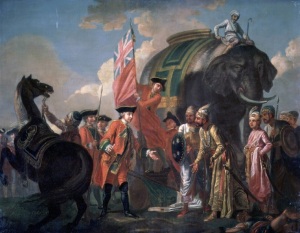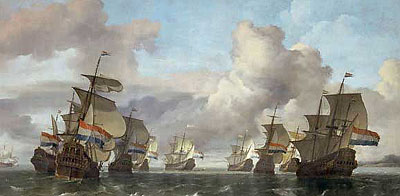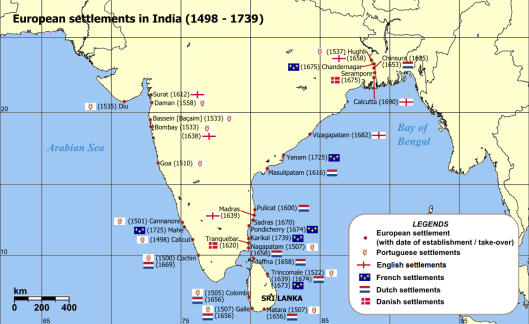The East India trading companies, along with their less prestigious but still successful western counterparts, were perhaps the most powerful corporations in history. While the English/ British East India Company was the most recognized, successful, and at times, outright notorious of the European trading companies, France, Spain, Portugal, the Dutch Republic, Denmark, Sweden, and several German, Italian and Baltic states chartered their own companies during the 17th and 18th centuries. The lucrative East India trade (modern-day India, south East Asia and Indonesia), generated tremendous wealth and power for a company and its parent nation. While chartered by a government, that government-owned no company assets or capital and exercised limited control over its actions. Private investors, such as merchants, aristocrats, soldiers and sailors owned all the company stock. Thus, without the encumbering government oversight and regulations, “the Company” effectively had free reign over its areas of operation/ influence. The companies built towns, ports, raised private armies and navies, and hired their own administrators. This degree of independence made the companies into de facto nations. They conducted trade, politics and made war with other companies, natives and foreign powers. Consequently, any territory it conquered (such as the British East India Company in India-see below), the company retained and managed; but still pledged allegiance to the chartering nation for purposes of legality and support when needed. In return, the nation essentially became the overlord of the colony (or conquered state), although the company had complete control. The chartering powers rarely interfered with company operations, and more often at times than not, supported them directly because it represented their national interests. It was also far cheaper for the overlord to allow a company, at the expense of granting full autonomy, to manage “their” colonies rather than do it themselves.
The English/ British East India Company was the largest and most powerful of the East India trading companies. Chartered in 1600 by Queen Elizabeth I, the East India Company built its first factory at the Bay of Bengal in India in 1609. It entered into immediate competition with the Portuguese, who already had trading stations in the area, and later the Dutch and French East India companies. In addition to European competitors, each Company also had to deal with indigenous Indian rivals, some of them quite powerful such as the Mughals. Ultimately, while Indians frequently cultivated relationships, including signing trade agreements and forming military alliances with the companies, for the most part, all of them coveted the Europeans’ demise and eviction from the sub-continent. In 1757, after the Battle of Plassey in the Seven Years’ War (1756-1763), which saw the elimination of France and its Company as a serious sub-continental competitor, the British East India Company wielded considerable influence and power. Slowly but surely, emerging Company and British Imperial strength forced the other nations’ companies out of India and the Far East. The British East India Company yielded control of India over to the Crown in 1858 following the Indian Sepoy Rebellion of 1857. Then in 1874, the Company dissolved as a result of the as a result of the East India Stock Dividend Redemption Act, thus ending 274 years of business and surviving the longest of any European East India trading company.
 Robert Clive at the Battle of Plassey in 1757
Robert Clive at the Battle of Plassey in 1757
The major East India companies:
English/British East India Company: 1600-1874
Dutch East India Company: 1602-1799
Danish East India Company: 1616-1729 (actually two companies, and then re-founded as the Asiatic Company in 1730)
Portuguese East India Company: 1628-1633
Casa da Índia (successor to the Portuguese East India Company, managing all Portuguese Imperial interests from Lisbon): 1434-1833
French East India Company: 1664-1794
Swedish East India Company: 1731-1813
Edmund Carter III


